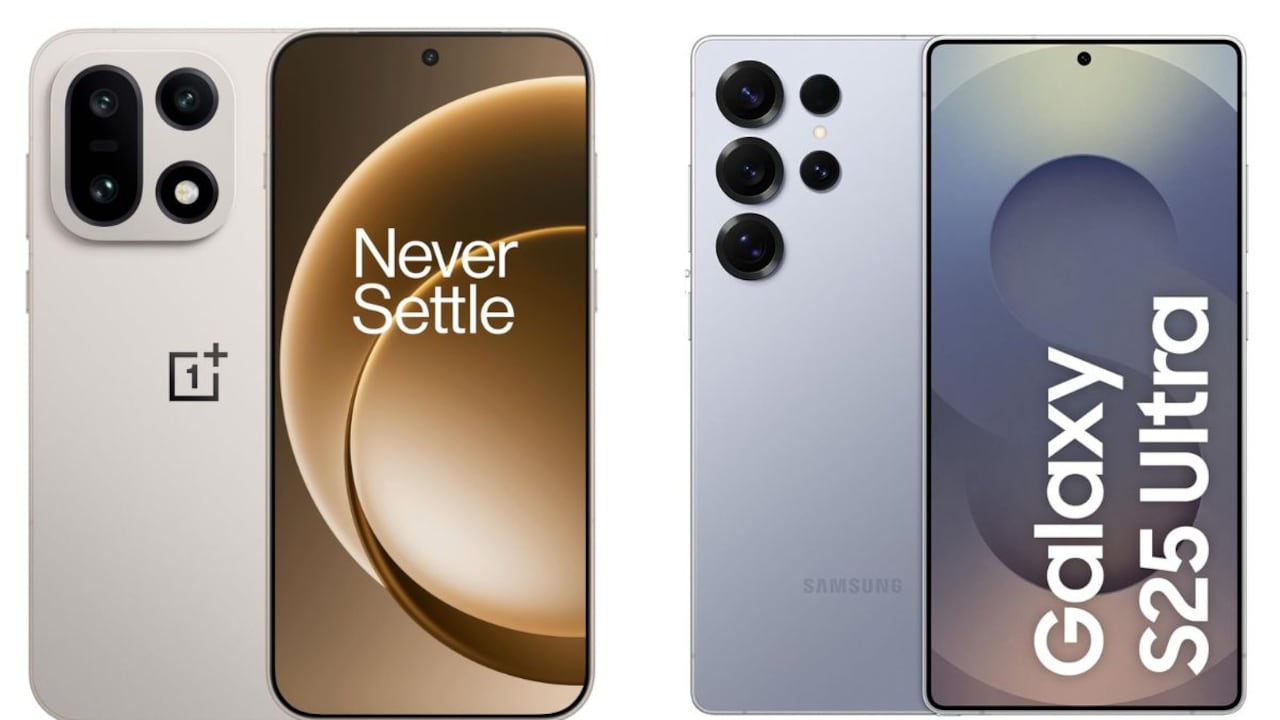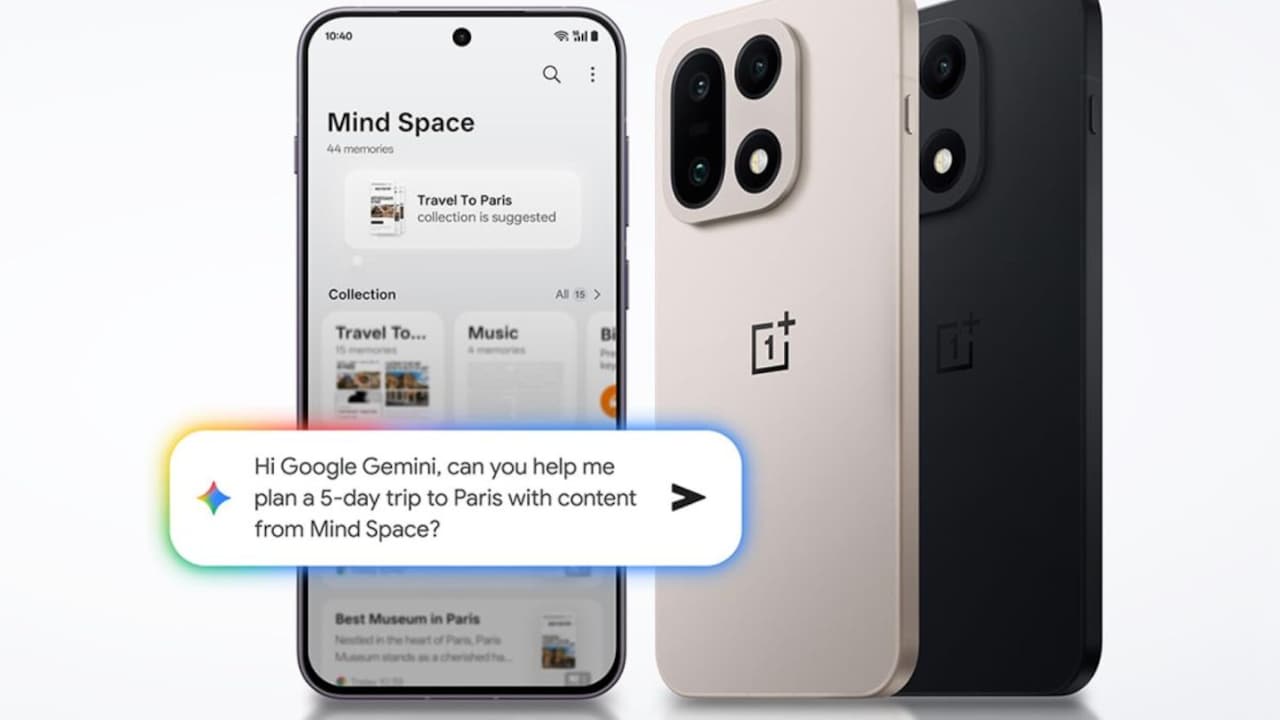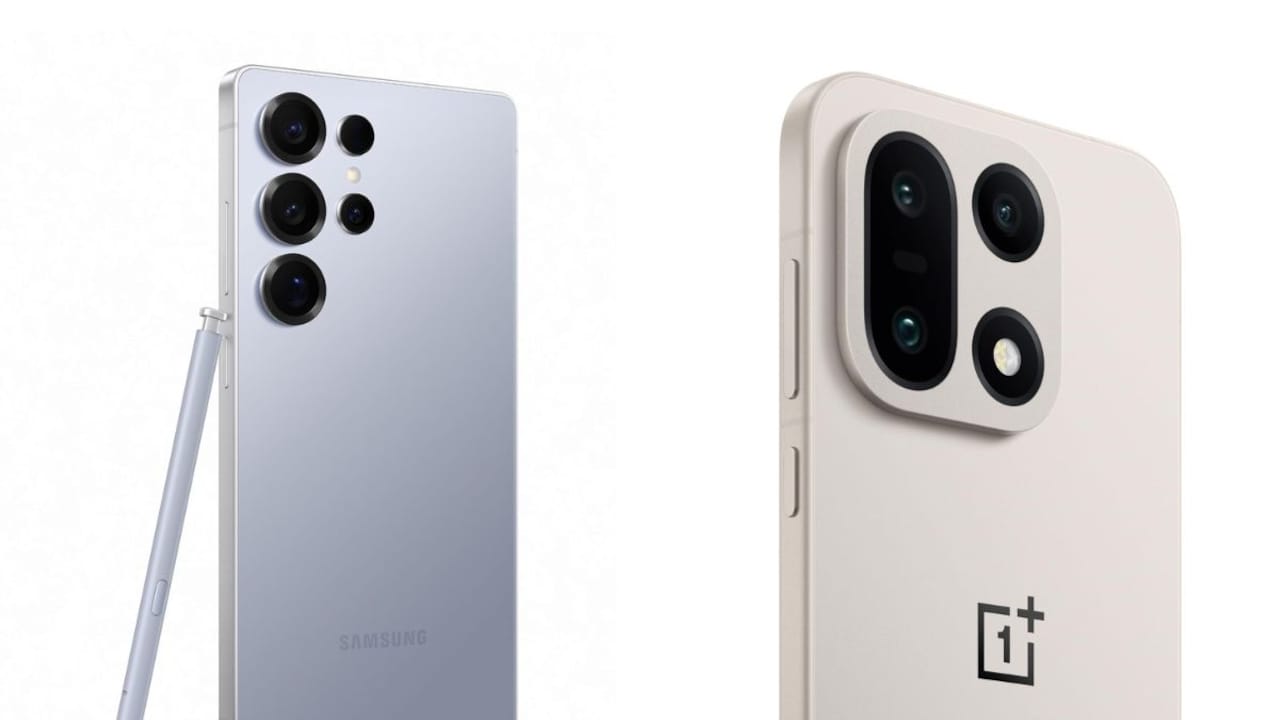OnePlus 15 vs Samsung Galaxy S25: Price, Performance, Camera And AI Features Compared
Two flagship phones. Two brand-new Snapdragon 8 Elite processors. The OnePlus 15 and Samsung Galaxy S25 are set to dominate the premium space this year, and this comparison breaks down everything that matters.

OnePlus 15 vs Samsung Galaxy S25: Full Comparison And Winner.
Every year, the smartphone race gets a little more dramatic. Makers push limits, launch fresh features and tempt buyers who swear they won't upgrade… until something irresistible arrives. This season, that spotlight shines brightly on the OnePlus 15 and Samsung Galaxy S25 — two devices built for users who want speed, style and smarts without compromises.
Both pack the new Snapdragon 8 Elite chipset, both lean heavily into AI-powered features and both promise exceptional cameras and displays. Yet their personalities differ, just like chai differs from coffee. Same purpose, different flavour.
This full OnePlus 15 vs Samsung Galaxy S25 comparison explores where each phone shines, where each stumbles and which one suits different kinds of users.

Things you need to know about OnePlus 15 vs Samsung Galaxy S25:
Photo Credit: Amazon
OnePlus 15 vs Samsung Galaxy S25: Full Comparison
Below are 10 key comparison points, each explained in depth (150–200 words each), keeping the tone lively, personal and conversation-friendly.
1. Design and Build Quality
The OnePlus 15 arrives with a bold “Sand Storm” finish that adds a rugged charm without feeling bulky. Its curves sit comfortably in hand, especially during long scrolling sessions or marathon gaming nights. The aluminium frame and Gorilla Glass Victus 2 ensure the phone handles drops better than clumsy hands handle pani puri plates. Four IP ratings—IP66/68/69/69K—make it one of the most durable devices around. Rain, dust or a rough auto ride won't bother it much.
Samsung's Galaxy S25, on the other hand, takes a sleeker approach. The “Silver Shadow” colour gives it a premium, minimalist look that feels ready for meetings, metro commutes and everything in between. The aluminium frame and Gorilla Glass Victus 2 keep it sturdy, though not quite as extreme as the OnePlus defence system. The S25's slimmer profile and lightweight design appeal to those who love elegance with convenience.
Both phones score high on build quality, but they cater to different tastes. OnePlus pushes rugged confidence, while Samsung focuses on refined simplicity.
2. Display Experience
The OnePlus 15 doesn't hold back with its 165Hz display, turning every swipe into silk-smooth motion. Gamers get the biggest advantage here — fast refresh rates, excellent touch response and very low latency thanks to the OP Gaming Core, G2 Wi-Fi chip and dedicated touch-response hardware. Watching content on the 4K 120fps Dolby Vision-ready screen feels like having a mini theatre in hand. Colours pop with natural vibrance, and outdoor visibility stays strong even under peak sun.
Samsung counters with a classic strength: polished AMOLED excellence. The Galaxy S25 display may not go all the way to 165Hz, but offers stunning brightness, deep blacks and crisp detail. Samsung's colour tuning leans towards cinematic accuracy, giving movies and photos a refined, immersive feel. Its balanced punch makes it a delight for social media, reading and daily streaming routines.
If maximum speed is the priority, OnePlus wins this round. If a rich, premium visual experience matters more than ultra-high refresh rates, Samsung stands its ground confidently. Both displays deliver, but in distinct ways suited to different lifestyles.
3. Performance and Speed
Both devices use the Snapdragon 8 Elite Gen 5 chipset, yet the performance personality differs. The OnePlus 15 emphasises raw power — 360° cooling, high-speed RAM and top-tier storage combine to maintain consistent speed even during heavy multitasking. Games like BGMI, Genshin Impact or console-grade titles run smoothly for hours. The phone rarely heats up, making it ideal for users who want a performance beast for work, entertainment and late-night online battles.
Samsung's Galaxy S25 offers equally strong performance but with a layer of software refinement. One UI handles daily tasks with fluid transitions, and the phone responds quickly even when juggling multiple apps. The slightly lower peak clock speed (4.47GHz vs OnePlus' 4.61GHz) doesn't make a real-world difference for most users. Samsung's optimisation ensures smoothness in productivity apps, entertainment platforms, photo editing, and switching between accounts.
While both deliver flagship-class power, OnePlus leans towards enthusiasts and gamers. Samsung suits users who prefer a smoother, polished performance experience with stability and long-term reliability at its core.

While both deliver flagship-class power, OnePlus leans towards enthusiasts and gamers; Photo Credit: Amazon
4. Battery Life and Charging
One look at the numbers says everything: the OnePlus 15 packs a massive 7300mAh battery. That's nearly tablet-like endurance. Most users get well over a full day, even with heavy use — 5G, camera sessions, gaming, streaming and countless messages. The 120W SuperVOOC wired charging fills up the phone faster than morning chai boils, and the 50W wireless charging makes daily top-ups effortless.
The Galaxy S25 features a 4000mAh battery, which sits much lower but uses Samsung's efficient One UI optimisation to stretch battery life intelligently. Light to moderate users can get a full day, but power users may need mid-evening charging. Charging speeds don't match OnePlus, and that's where the gap widens. It suits those with moderate use habits — messages, social apps, browsing and occasional video calls.
In the battery department, OnePlus dominates. Users who stay outdoors for long hours, travel frequently or game extensively will appreciate the extra stamina. Samsung offers solid performance but doesn't compete on sheer capacity or charging speed.
5. Camera Quality: Photos
Both feature a 50MP primary camera, yet the experience varies. The OnePlus 15 focuses on colour accuracy, sharpness and detail using its DetailMax Engine. Daylight shots capture vibrant scenery without oversaturation. Street food pics look delicious, landscapes look crisp and skin tones stay natural. Low-light images show good clarity, and the camera maintains detail even without multiple attempts.
Samsung's S25 brings its advanced ProVisual Engine to the table, offering strong HDR performance and bright, pop-heavy visuals. Its photos feel more dramatic straight out of the gallery — ideal for users who prefer social-ready images. Night shots stand out with improved noise reduction, and the dynamic range gives urban evening scenes a lively glow.
OnePlus gives a more realistic, balanced look suitable for editing or professional use. Samsung delivers punchier, more visually striking photos perfect for social uploads. The winner depends entirely on personal taste: natural or vibrant?
Also Read: How To Choose A Smartphone With The Best Telephoto Lens
6. Camera Quality: Video
Here's where OnePlus sweeps forward confidently. The OnePlus 15 supports Android's first 4K 120fps Dolby Vision video. Slow-motion shots burst with cinematic flair and maintain excellent brightness, contrast and depth. Whether recording birthday celebrations, monsoon drives or a cricket match with friends, the footage looks smooth and premium.
Samsung's S25 offers clean, stable video output with 10-bit HDR improvements. Its footage appears more neutral with accurate exposure control. While the video quality feels refined, the S25 doesn't match the cinematic appeal offered by 4K 120fps Dolby Vision from OnePlus.
Creators, vloggers and users who love recording life's moments in dramatic fashion will naturally lean towards OnePlus. Samsung supports great videos for social content but doesn't try to match the professional-grade capabilities of the OnePlus 15 in this department.

Samsung supports great videos for social content; Photo Credit: Amazon
7. AI Features and Software Experience
AI becomes a major character in this generation. OnePlus introduces “Plus Mind,” an AI system built to work with Gemini. It automatically captures, organises and recalls information, helping users track ideas, screenshots, plans and reminders within the Mind Space app. It feels like having a personal assistant who remembers everything, even when brain are too tired after a long day.
Samsung's approach feels different but equally smart. Galaxy AI features like Now Brief and Gemini Live elevate the user experience. Now Brief acts like a personal dashboard, giving updates about schedules, reminders and even energy score. Gemini Live becomes a real-time conversational tool for brainstorming or solving tasks without switching apps. It shines in productivity and learning scenarios.
Both phones deliver excellent AI, though OnePlus focuses on personal memory enhancement while Samsung emphasises daily assistance, productivity and seamless conversation-driven control. Users who like detailed organisation may lean towards OnePlus, while those who want smoother day-to-day convenience may prefer Samsung.
8. Gaming and Heat Management
OnePlus goes all-in on gaming. The OP Gaming Core engine ensures stability during long sessions, while the 360° cooling keeps temperatures under control even during intense graphics loads. The high refresh rate and responsive touch engine offer a noticeable advantage in competitive titles. Frame drops stay rare, and lag becomes almost non-existent.
Samsung supports strong gaming performance through the Snapdragon chipset and optimisation in One UI. Casual games run effortlessly, and heavier titles stay smooth at high settings. Heat management stays stable in shorter sessions, though extended gameplay may warm the device more than the OnePlus 15. Samsung's focus leans towards balanced everyday use instead of pure gaming dominance.
Gamers obviously get more value from OnePlus. Samsung caters to users who game occasionally but don't need every hardcore feature available.
9. Price, EMI and Value for Money
The OnePlus 15 (12GB+256GB) arrives at ₹72,999, with frequent bank offers, cashback options and No Cost EMI starting around ₹3,539. With its massive battery, premium camera features and gaming upgrades, the phone offers excellent value for users wanting maximum specs per rupee.
The Galaxy S25 begins at ₹80,999 for the same storage and RAM. The higher price comes with Samsung's brand trust, refined software, reliable camera tuning and sleek design. EMI starts near ₹3,927, and bank offers, especially with HDFC cards, lower the effective price significantly.
Value depends on priorities: OnePlus gives more hardware at a lower price, while Samsung offers a polished ecosystem. Budget-conscious users or performance-driven buyers will find OnePlus compelling. Users preferring long-term stability, brand prestige and software excellence may happily spend extra on Samsung.

Both OnePlus and Samsung offer great value for money; Photo Credit: Amazon
10. Who Should Buy Which?
The OnePlus 15 suits users who love speed, power and long battery life. Gamers, travellers, creators and heavy multitaskers benefit most from its strengths. Its camera features, especially 4K 120fps Dolby Vision, make it a dream device for anyone who loves capturing life in style.
The Samsung Galaxy S25 caters to users who value a refined experience, top-tier security, excellent AI features and a sleek, professional design. Students, office-goers, content consumers and users who prefer effortless daily performance will appreciate the S25's balanced approach.
Both phones stand tall, but the right choice depends on lifestyle. It's like choosing between a high-performance bike and a luxury sedan — both brilliant, but built for different journeys.
Products Related To This Article
1. Samsung Galaxy S25 5G Smartphone with Galaxy AI
2. OnePlus 15
The OnePlus 15 and Samsung Galaxy S25 represent the best of modern flagship innovation. OnePlus takes the lead in battery, charging, gaming performance and cinematic video features. Samsung counters with polished software, elegant design, strong AI assistance and dependable camera consistency.
Choosing either one is like choosing between two top-tier dishes on a menu — no wrong answer, just different flavours. Users wanting pure power and long-lasting stamina get unmatched value with the OnePlus 15. Users who prefer a refined, dependable and classy experience may gravitate towards the Galaxy S25. Whichever you pick, the future feels bright, fast and more intelligent than ever.
(Disclaimer: This article may include references to or features of products and services made available through affiliate marketing campaigns. NDTV Convergence Limited (“NDTV”) strives to maintain editorial independence while participating in such campaigns. NDTV does not assume responsibility for the performance or claims of any featured products or services.)











